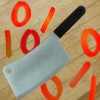 Power factor measurement
Power factor measurement
Has anyone does any project on power factor measurement?
I am struggling with hardware components for this project, I was previously thinking of putting 2 hall effect sensors for current and voltage, but didn't knew what to use for real power measurement.
NOW, after some research I have seen that few ics are there which can actually compute these three things (and more) and can pass the info to a PIC over serial or I2C interface. Has someone used any such IC? and how correct are the results. I am planning to take on a project for power factor correction but it's all down to these measurements being correctly done. I need to display these results on an LCD screen (Vrms, Irms & P.f), but that I can do that part, I need help with measurements.
___________________
WHY things get boring when they work just fine?











Bookmarks